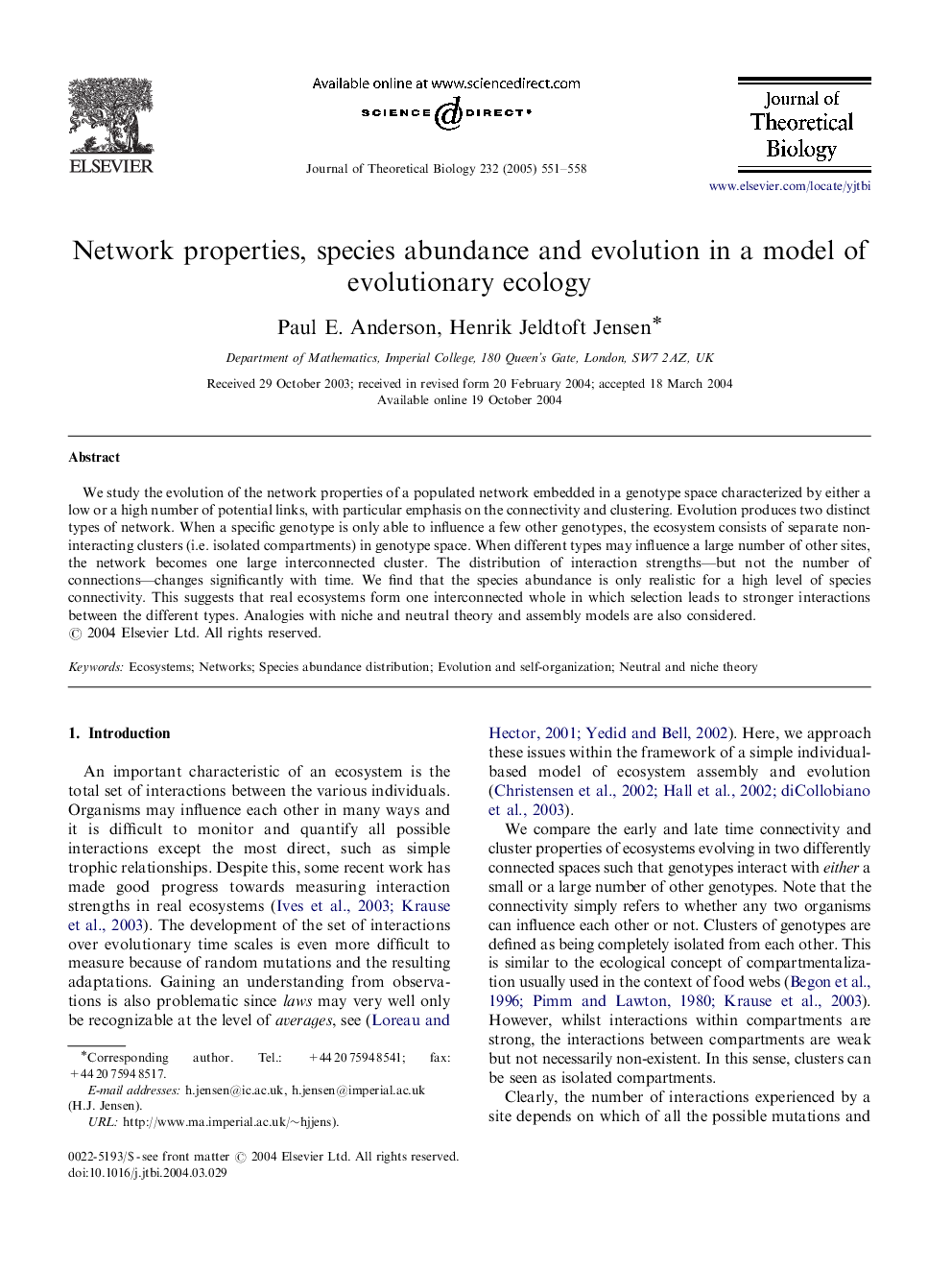| Article ID | Journal | Published Year | Pages | File Type |
|---|---|---|---|---|
| 9469911 | Journal of Theoretical Biology | 2005 | 8 Pages |
Abstract
We study the evolution of the network properties of a populated network embedded in a genotype space characterized by either a low or a high number of potential links, with particular emphasis on the connectivity and clustering. Evolution produces two distinct types of network. When a specific genotype is only able to influence a few other genotypes, the ecosystem consists of separate non-interacting clusters (i.e. isolated compartments) in genotype space. When different types may influence a large number of other sites, the network becomes one large interconnected cluster. The distribution of interaction strengths-but not the number of connections-changes significantly with time. We find that the species abundance is only realistic for a high level of species connectivity. This suggests that real ecosystems form one interconnected whole in which selection leads to stronger interactions between the different types. Analogies with niche and neutral theory and assembly models are also considered.
Related Topics
Life Sciences
Agricultural and Biological Sciences
Agricultural and Biological Sciences (General)
Authors
Paul E. Anderson, Henrik Jeldtoft Jensen,
